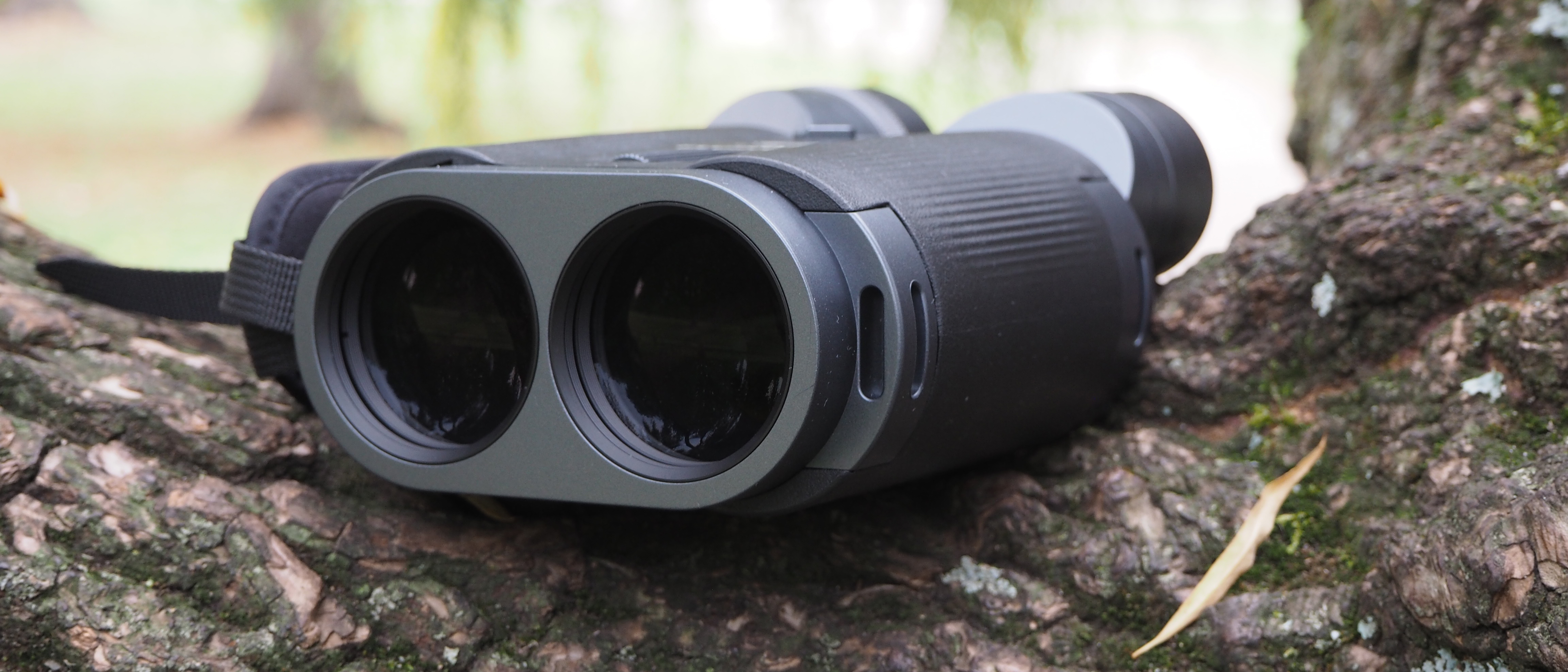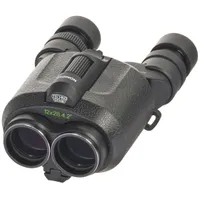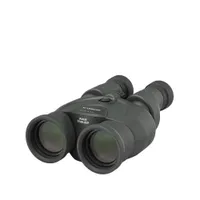Digital Camera World Verdict
Adding an image stabilization mechanism to a pair of binoculars can sometimes make for an unwieldy combination. However, the Fujinon Techno-Stabi TS-L 1640 bucks that trend. Despite the sleek, compact chassis, it still manages to deliver sharp, judder-free views handheld, the large and bright lens in conjunction with ‘IS’ enabling the identification of wildlife via subtle distinguishing features. Thanks to their high-quality construction and sleek, contemporary design, style gurus will love these modern binoculars as much as birdwatchers and nature lovers. However, a premium build means a premium price tag, and there’s no tripod attachment if handholding becomes tiring.
Pros
- +
Beautiful design and compact, portable dimensions
- +
Image stabilization powered by AAA batteries
- +
Weatherproofed construction enables use in all conditions
Cons
- -
Premium price tag to go with its premium features
- -
Battery compartment access obstructed by strap
- -
Heavy to use handheld for prolonged periods
- -
No screw thread for tripod attachment
Why you can trust Digital Camera World
In case you’re wondering, ‘Techno-Stabi’ doesn’t refer to a new extreme genre of dance music. In this context, it’s a Japanese reference to image stabilization. And yes, while adding an anti-shake mechanism to binoculars usually bumps up the price and increases overall bulk and weight, experience has taught me that, for the most part, such compromises are worth it. Especially if I get a wobble-free image at a generous magnification, without needing to lug a tripod around. I want to concentrate on my subject more than fiddling with my gear. So, could this latest Fujifilm example deliver most of what we want – great results, but with compact and lightweight dimensions at a fair price – while minimizing any of these traditional compromises?
Compared with the existing Fujifilm Fujinon Techno-Stabi TS16x28WP, the Fujinon Techno-Stabi TS-L 1640 arrives with a bigger and potentially brighter 40mm lens, theoretically allowing for clearer visibility of far-off subjects. While omitting that waterproof indicative ‘WP’ suffix, its IPX7 rating still offers more than adequate resistance for stress-free outdoor use. I would not want to risk submerging these binos for prolonged periods, but I felt reassured when getting caught in the rain and by the odd splash of water.
Like other Fujifilm binoculars I’ve handled, upon sliding it out of its case, the TS-L 1640 appears to have the usual mix of high-quality construction and convenient portability. But does a relatively high 16x magnification – making it the junior partner to a 20x alternative announced alongside it – result in a restrictively narrow field of view? Or does the Fujifilm Fujinon Techno-Stabi TS-L 1640 have the perfect blend of practicality and performance that could rank it among the best image-stabilized binoculars? Read on as I investigate further…
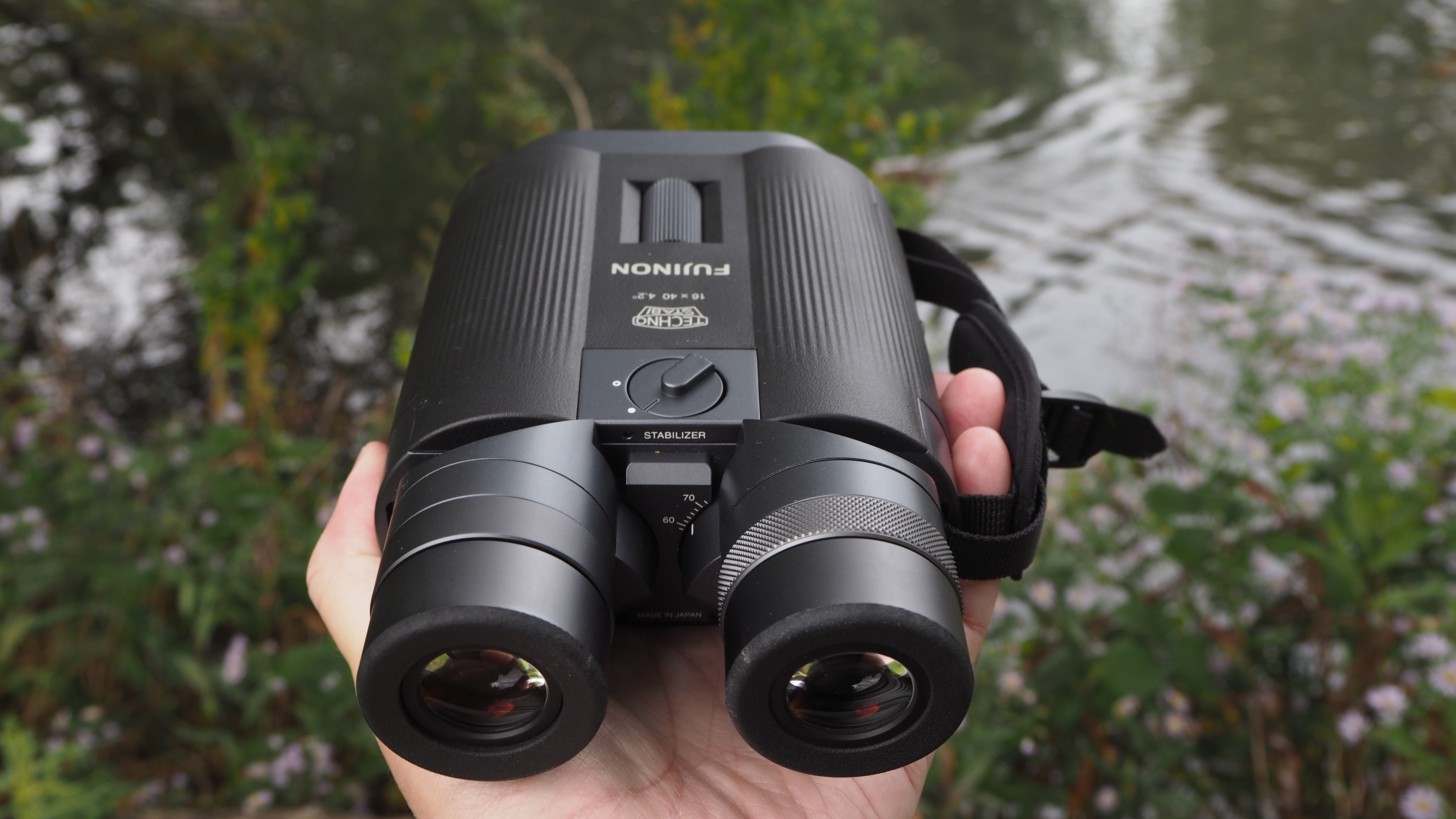
Fujifilm Fujinon Techno-Stabi TS-L 1640: Specifications
Magnification | 16x |
Objective lens size | 40mm |
Field of view at 1000m | 73m |
Eye relief | 15.7mm |
Minimum focus distance | 5m |
Dimensions | 185.5x122x72mm |
Weight | 856g |
Fujifilm Fujinon Techno-Stabi TS-L 1640: Price
Announced in January 2025, the Fujifilm Fujinon Techno-Stabi TS-L 1640 has only now made it from Japan to the Digital Camera World test lab. Simultaneously arriving alongside it is Fujifilm’s 20x magnification TS-L 2040, priced at just a fraction more for those who want extra reach, albeit with a slight trade-off in terms of a narrower field of view at 1,000 meters. Oddly, despite pulling the faraway even closer, the TS-L 2040 is also a few grams lighter.
With a $1,399.95 / £1,049 / AU$1,949 price tag, there is no denying that you pay a premium for its decent specs, impressive build quality, and upmarket design. And it would make sense for anyone considering a purchase to compare the current pricing for the newer TS-L 1640 and TS-L 2040 with the similarly designed Fujifilm Fujinon Techno-Stabi TS16x28WP from last year. At the time of writing, there were some very keenly priced deals for the latter.
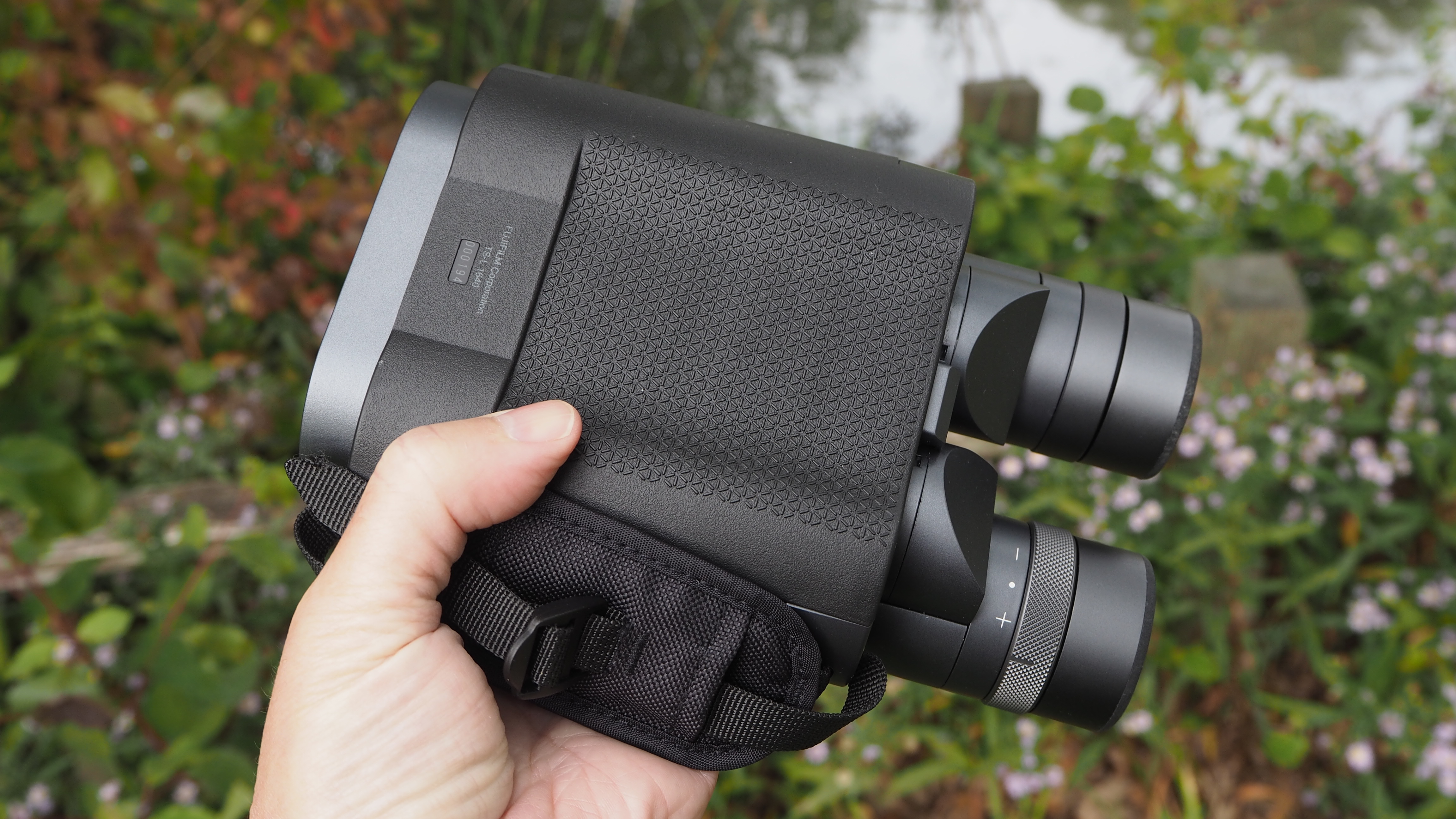
Fujifilm Fujinon Techno-Stabi TS-L 1640: Design & Handling
As with prior iterations, the build and look of the Fujinon Techno-Stabi TS-L 1640 is minimalistic and contemporary. Adjustable eyepieces aside, which resemble frogs’ legs at their widest setting, it has little in the way of protruding elements. Obviously hoping for two sales in one, Fujifilm is suggesting this latest iteration is a good match for its X-series cameras in terms of construction. The curved sides of the binoculars resemble a very ‘hip’ hip flask, albeit one with ‘legs’. Such quirks aside, to my eyes the design is lovely.
At 856g, the device weighs less than a typical bag of sugar, yet feels surprisingly robust when handheld. I certainly felt its heft when transporting the Fuji in a roomy jacket pocket, too. Curiously, the higher magnification 20x40 model weighs a fraction less, at 853g, despite its dimensions being an identical 185.5x122x72mm. Providing a decent amount of grip, the main body of the binoculars has a ridged, subtly rubberized surface. Combined with its weight, I felt confident of being able to hold it steady and get a good, clear view of my subjects, with or without image stabilization deployed.
The best camera deals, reviews, product advice, and unmissable photography news, direct to your inbox!
Although the size here means that operation with one hand is possible, it still feels more natural and practical to grip the binoculars with both. A bundled neck strap and hand strap provide an additional means of holding the unit, while adding comfort. The crucially important part of focusing the binoculars is achieved by turning the narrow-ridged dial atop the device, where it ergonomically falls under the middle fingers, as eyes remain glued to the eyepieces. As I would expect at this price and model class, the Fujinon Techno-Stabi TS-L 1640 lens construction includes ED – extra-low dispersion – glass elements, for boosting optical clarity.
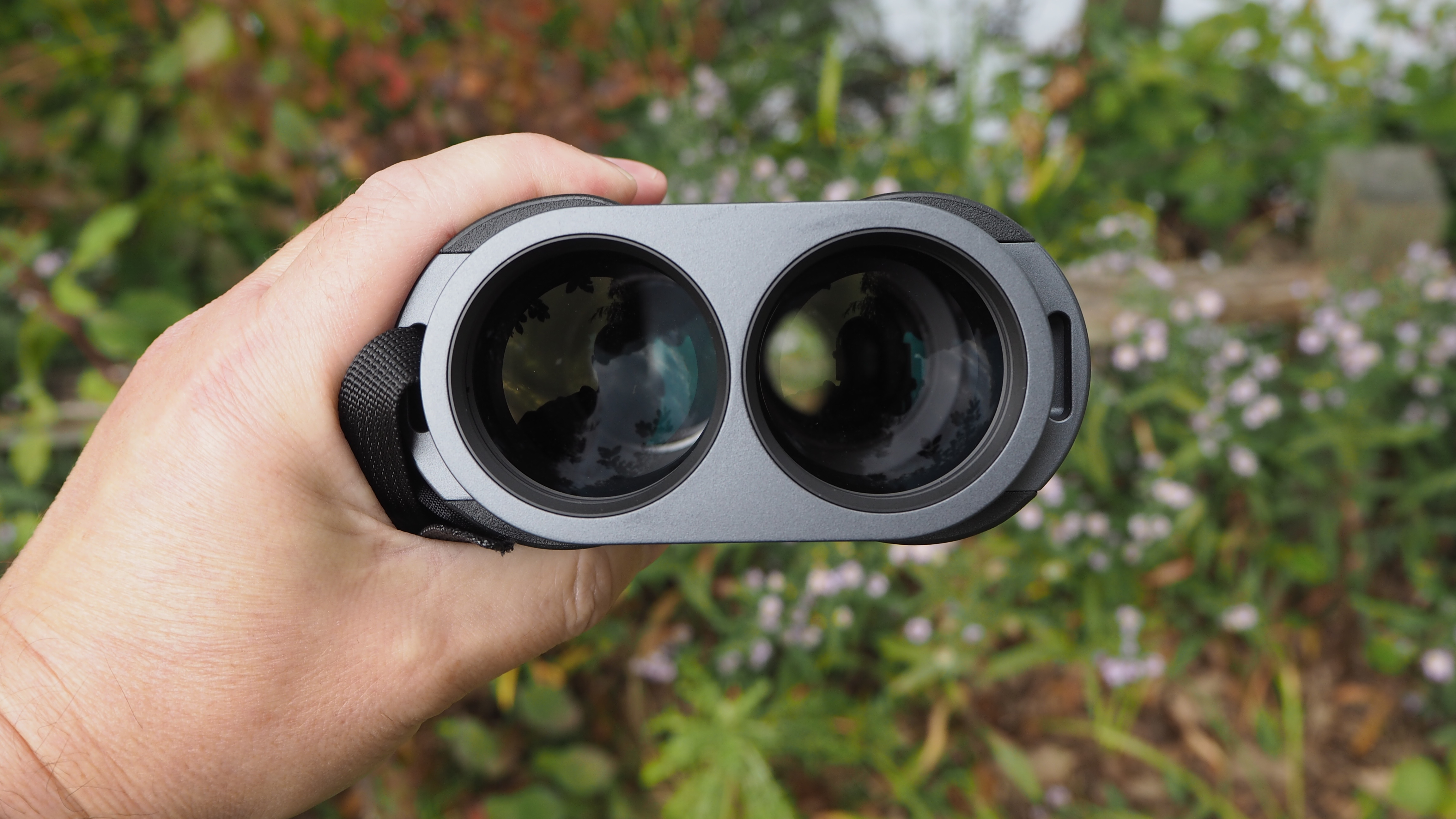
Sadly, my one design gripe on a device that otherwise is almost flawless – if Porsche designed a pair of binoculars, they might look something like this – is that when the hand strap is attached, it partially covers the compartment housing the batteries required to power its image stabilizer. This makes access unnecessarily awkward. The said compartment is located on the right-hand side of the binoculars when viewed top-down, so those who are left-handed can simply move the strap to the opposite side and not be affected. With more of us right-handed than left-handed, the answer isn’t obvious as to why Fuji’s engineers didn’t simply shift the battery compartment to the other side.
On a more positive note, rubber eyepiece and lens covers are provided in the box, along with a padded, zippered carry pouch, to protect the binoculars when not in use. Twist-up eyecups further aid comfort. Annoyingly, I found that the lens cover kept falling off when placing the binoculars in a bag or retrieving them. Since there is no way of tethering it (unlike the eyepiece cover, which provides lugs to the side), I can imagine the lens cover easily being lost.
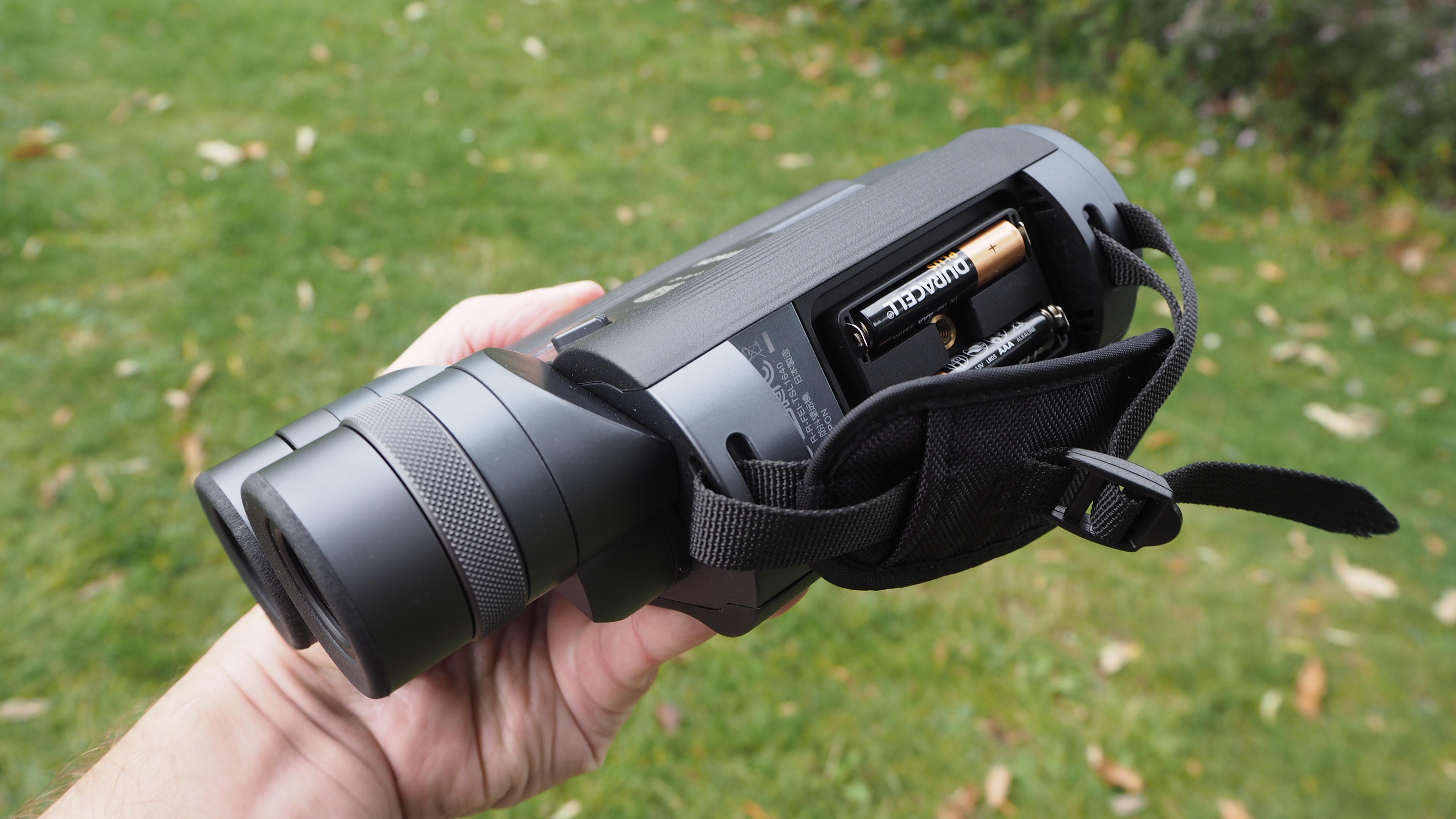
Fujifilm Fujinon Techno-Stabi TS-L 1640: Performance
Fujifilm claims that the Fuji Fujinon Techno-Stabi TS-L 1640's core image stabilization feature can be used continuously for up to 30 hours, which is longer than I’d personally want to be out in the wet and wild, especially if using the binoculars handheld without a tripod, which is the intention here. A small, unobtrusive bulb glows green to confirm, if needed, that ‘IS’ has been activated, although this bulb is rendered invisible outdoors in daylight.
Power comes not via a rechargeable cell or even the small CR2 battery used by the Fujinon Techno-Stabi TS16x28WP alternative, but a pair of bog-standard yet conveniently sourced AAA batteries. Usefully, the ‘IS’ feature is automatically powered down after 60 consecutive minutes to prevent the batteries from being drained if you forget to turn it off when slipping the device back into a bag or pocket.
As I’ve noted, accessing the battery compartment is a little fiddly if the hand strap has been secured to the right, so it’s reassuring that batteries won’t need to be replaced too often. Plus, as I found when I tested the TS16x28WP previously, the controls on the Techno-Stabi TS-L 1640 are stiff enough that accidentally jogging either the focus wheel or the inter-pupillary distance between the adjustable eyepieces is nigh-on impossible.
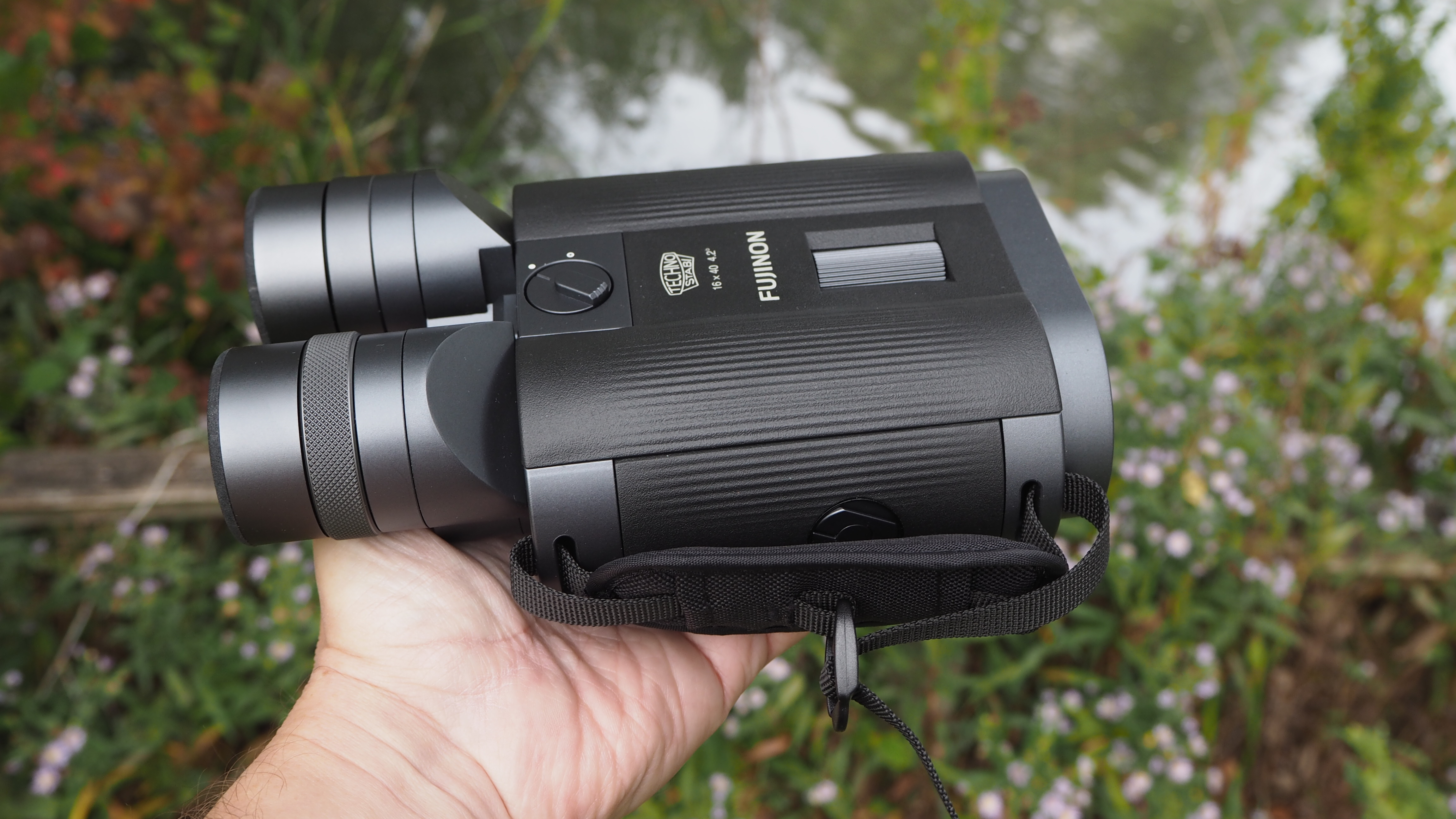
Should you want to eke out battery life further, it’s perfectly possible to get a good result with these binoculars without activating the image stabilization feature. The size and weight alone ensure I can get a comfortable and steady enough hold to avoid whatever I’m observing jumping around in my field of view. And you will have to handhold these binos; there is no screw thread provided for tripod mounting. That said, the difference when turning the dial to switch IS on is noticeable. Any wobble is immediately smoothed out, wildfowl appearing to glide even more majestically across the surface of my local pond. As well as giving me a clearer view of whatever I’m observing – especially useful if trying to identify unique markings – a lack of jitter also helps avoid eyestrain, making for a more comfortable experience overall.
In terms of the view through the eyepieces, the Techno-Stabi TS-L 1640 binoculars are impressively sharp and clear, but no less so than I expected, given their price and class. Any instances of chromatic aberration are kept well under control. The only very slight purple fringing I noticed was along the edge of a white car parked on my local common, its bright outline set against the deep green of its grassy background. But this would only be noticeable to anyone actively looking for fault.
Fujifilm Fujinon Techno-Stabi TS-L 1640: Verdict
The Fujinon Techno-Stabi TS-L 1640 is another good-looking, well-performing addition to Fujifilm’s burgeoning Techno-Stabi range, albeit one that comes at a premium price. On a practical note, shoehorning an image stabilization mechanism into a relatively compact chassis powered by two AAA batteries has resulted in sufficient heft that I was able to hold it fairly steady in both hands and enjoy a clear view, even without ‘IS’ activated.
But at the same time, I can appreciate its use in smoothing out the effects of any hand tremor when using the TS-L 1640 for longer periods. Having the option available just means we’re more likely to pick it up, take it out, and experiment with it, which some will doubtless consider makes it worth every penny.
Features ★★★★☆ | Effective image stabilization and bright 40mm lenses top these binos' feature set. |
Design ★★★★☆ | A premium look and feel, with subtle ridged detail and textured surface aiding grip; overall, the design is rather gorgeous. |
Performance ★★★★☆ | Eyepieces and the focus dial are stiff to the touch, but at least this means it is very difficult to accidentally jog any preferred setting. |
Value ★★★★☆ | These binos come with a price tag that matches its premium look and feel, but investment will be rewarded with years of future use. |
Alternatives
The optics of the Fujifilm Fujinon Techno-Stabi TS16x28WP are impressively sharp and clear when viewed in isolation or compared to similar battery-powered devices from Canon, but cannot quite compete with the likes of more upmarket binoculars.
Okay, the Canon 12x36 IS III's magnification and objective lens size might seem dwarfed in relation to the Fujinon Techno-Stabi TS-L 1640 on paper, but the difference in practice is not that pronounced. However, the Canon's stabilization isn't as effectively implemented as it is in the TS-L 1640.
Gavin has over 30 years’ experience of writing about photography and television. He is currently the editor of British Photographic Industry News, and previously served as editor of Which Digital Camera and deputy editor of Total Digital Photography.
He has also written for a wide range of publications including T3, BBC Focus, Empire, NME, Radio Times, MacWorld, Computer Active, What Digital Camera and the Rough Guide books.
With his wealth of knowledge, Gavin is well placed to recognize great camera deals and recommend the best products in Digital Camera World’s buying guides. He also writes on a number of specialist subjects including binoculars and monoculars, spotting scopes, microscopes, trail cameras, action cameras, body cameras, filters and cameras straps.
You must confirm your public display name before commenting
Please logout and then login again, you will then be prompted to enter your display name.
